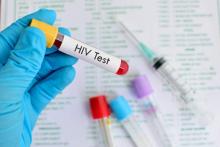More than half of HIV infections in Dutch men who have sex with men (MSM) could have been prevented with a combination of regular testing and pre-exposure antiretrovirals for HIV-negative men, and early antiretroviral treatment for those with new infections, according to a new study.
The results of the national database study suggest that dramatic reductions in HIV infections could be achieved with a combination of improved HIV testing and immediate implementation of the World Health Organization’s newly revised 2016 HIV treatment guidelines, Dr. Oliver Ratmann and his colleagues reported (Sci Transl Med. 2016 Jan 6;8[320]. doi: 10.1126/scitranslmed.aad1863).
The WHO guidelines call for providing immediate antiretroviral treatment (ART) to all HIV-infected MSM and pre-exposure antiretrovirals (PrEP) to at least half of all HIV-negative MSM younger than 30 years.
Dr. Ratmann of the School of Public Health at Imperial College, London, and his coauthors used national cohort studies to identify 617 patients who were in the first year of an HIV infection from 1996-2010. By matching their HIV strains with infected men in the overall analysis, they determined that most of the transmissions (71%) came from men with undiagnosed HIV, and 22% from men who were diagnosed but not yet treated. Only 6% were from men who had initiated antiretroviral therapy, and 1% were from men who had not had health care treatment in the last 18 months. Nearly half of the infections (43%) were passed on by men who were in their first year of an HIV infection.
When the research team considered annual testing, they found that only 17% of transmitters had an HIV test in the year before diagnosis. “If half of all transmitters had been tested annually, immediate ART and PrEP to half of all MSM age 30 years or younger who test negative could have averted 45% of infections. Comprehensive rollout of PrEP to half of all men testing negative irrespective of their age would have [averted] 66% of infections,” the investigators wrote.
Regular testing will be a key part of success when the 2016 WHO guidelines are adopted, Dr. Ratmann and his colleagues noted. “Without substantial increases in current annual testing coverage, ART and PrEP (also offered), the revised guidelines could not have prevented more than a third of all infections in our transmission cohort. Strategies such as self-testing, community-based testing, and more provider-initiated routine testing in general practices and at medical admissions ... need to be expanded alongside biomedical interventions,” they wrote.
The study was supported by a grant from the Netherlands Ministry of Health, Welfare and Sport through its Centre for Infectious Disease Control–National Institute for Public Health and the Environment. Dr. Ratmann declared financial support from the Wellcome Trust, while two of his coauthors disclosed funding from the European Research Council, the Bill & Melinda Gates Foundation, Bristol-Myers Squibb, ViiV Healthcare, Gilead Sciences, Janssen Pharmaceuticals Inc., and Merck & Co.


